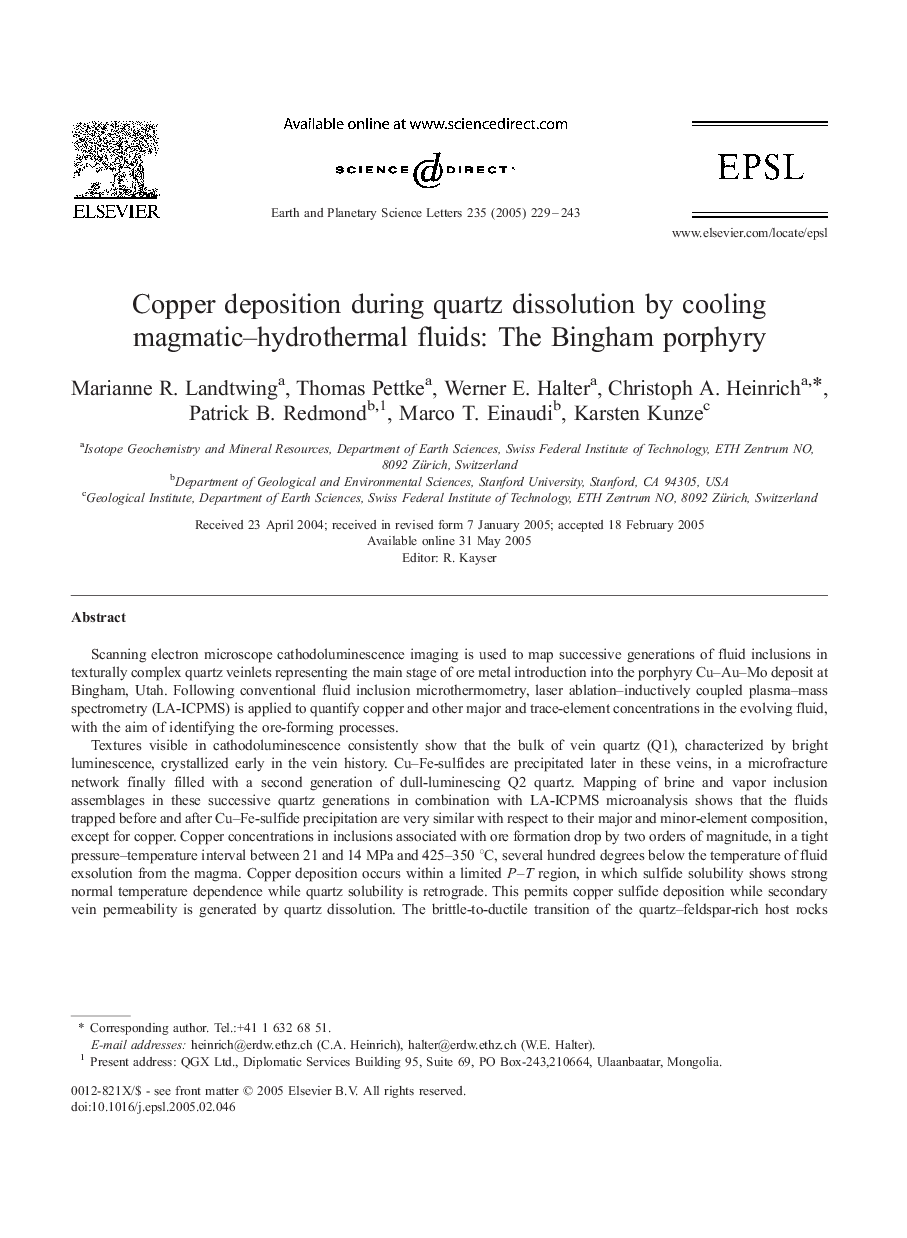| Article ID | Journal | Published Year | Pages | File Type |
|---|---|---|---|---|
| 9522324 | Earth and Planetary Science Letters | 2005 | 15 Pages |
Abstract
Textures visible in cathodoluminescence consistently show that the bulk of vein quartz (Q1), characterized by bright luminescence, crystallized early in the vein history. Cu-Fe-sulfides are precipitated later in these veins, in a microfracture network finally filled with a second generation of dull-luminescing Q2 quartz. Mapping of brine and vapor inclusion assemblages in these successive quartz generations in combination with LA-ICPMS microanalysis shows that the fluids trapped before and after Cu-Fe-sulfide precipitation are very similar with respect to their major and minor-element composition, except for copper. Copper concentrations in inclusions associated with ore formation drop by two orders of magnitude, in a tight pressure-temperature interval between 21 and 14 MPa and 425-350 °C, several hundred degrees below the temperature of fluid exsolution from the magma. Copper deposition occurs within a limited P-T region, in which sulfide solubility shows strong normal temperature dependence while quartz solubility is retrograde. This permits copper sulfide deposition while secondary vein permeability is generated by quartz dissolution. The brittle-to-ductile transition of the quartz-feldspar-rich host rocks occurs in the same temperature range, which further enhances vein reactivation and promotes cooling and expansion of fluids ascending across the transition from lithostatic to hydrostatic conditions.
Related Topics
Physical Sciences and Engineering
Earth and Planetary Sciences
Earth and Planetary Sciences (General)
Authors
Marianne R. Landtwing, Thomas Pettke, Werner E. Halter, Christoph A. Heinrich, Patrick B. Redmond, Marco T. Einaudi, Karsten Kunze,
